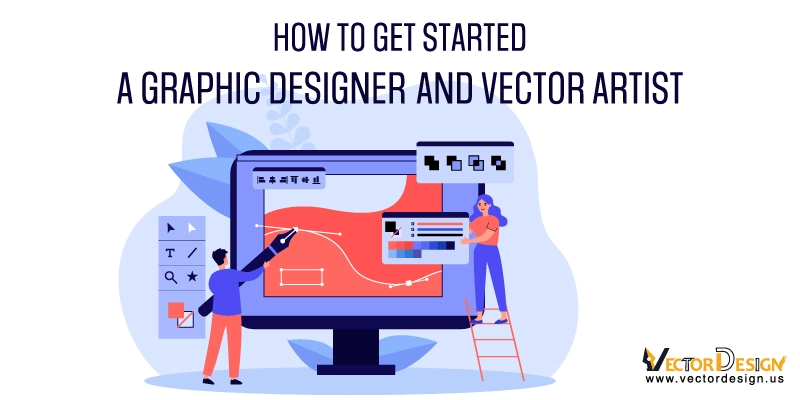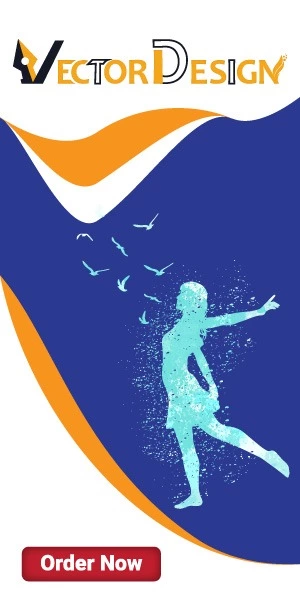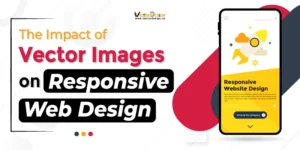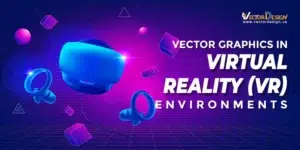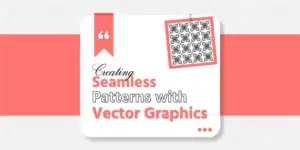Do you want to work as a graphic designer or a vector artist? Then you’ve come to the right place! Use your technical expertise and creativity to convey ideas and messages through visual media in the dynamic and interesting disciplines of graphic design and vector art. This article will give you some best and useful information and pointers on how to begin and be successful in these sectors, whether you’re a novice or an established designer trying to enhance your talents.
Understanding Graphic Design and Vector Art

Graphic design and vector art are closely related, yet there are several essential differences to be aware of. The creation of visual content for print or digital media, including as logos, brochures, websites, and social media postings, is referred to as graphic design.
Vector art, on the other hand, entails the creation of scalable visuals through the use of geometric shapes and lines. Vector art is frequently used to make logos, icons, and illustrations, and it is preferred over raster graphics (pixel images) because it can be enlarged without losing quality.
Designers use a variety of tools and software to create graphic design and vector art, including Adobe Photoshop, InDesign, Sketch, Illustrator and CorelDRAW. Because these will be your major tools for creating and editing designs, it’s important that you become comfortable with them and understand how to apply them efficiently.
Graphic designers and vector artists must have a good understanding of design concepts and aesthetics in addition to technical skills. Understanding how to use color, composition, and typography to successfully deliver a message or produce a desired visual impact is part of this.
This article will provide important information and tips on how to succeed as a graphic designer or vector artist, whether you’re just starting out in your design career or looking to improve your skills and take your job to the next level. We’ll talk about how to develop your skills, find your niche, build a good portfolio, and find a job in the design industry. So, let’s get you started on your road to being a graphic designer or vector artist!
Developing Your Skills

As with any profession, it is vital to continuously improve and expand your skills as a graphic designer or vector artist. There are numerous ways to do this, including taking online courses or workshops, practicing on your own, and staying updated with design trends and techniques. Here are some more suggestions to help you improve your skills:
- Experiment with various design styles and techniques: Don’t be scared to try new things and push your design style’s boundaries. This will assist you in identifying your skills and weaknesses, as well as making you a more versatile designer.
- Seek feedback from others: It’s important to get feedback on your work from other designers, clients, and even non-designers. This can help you identify areas of improvement as well as provides important information about how other people see your ideas.
- Stay organized and efficient: As a designer, you’ll most likely be managing several projects and deadlines. To meet deadlines and deliver high-quality work, it’s important to be organized and work effectively.
- Improve your communication skills: Graphic design and vector art are about more than just making eye-catching designs; they are also about communicating ideas and messages effectively. Communication with clients and team members, as well as presenting your work to others, requires excellent communication skills.
Finding Your Niche

Graphic design and vector art are broad subjects with several subdivisions, therefore it’s important to choose your specialty and concentrate in one area. This will not only help you build your own unique style and voice, but it will also increase your earning potential as a designer. Branding, web design, illustration, and package design are some popular graphic design and vector art niches.
Consider your hobbies and strengths to decide which niche is best for you. What are your favorite kinds of designs? What are your strong points? You may also look into the various specialties to discover what kinds of projects and clients are available in each area.
It’s also necessary to keep in mind that your niche will change as you gain experience and discover new interests. As mentioned earlier, don’t be hesitant to explore and experiment with new design areas. As a designer, the more diverse your skills and knowledge, the more chances you’ll have.
Building Your Portfolio

Your portfolio is your trump card as a graphic designer or vector artist. It highlights your abilities, style, and personality and is an important factor in attracting future clients and companies. It’s necessary to keep your portfolio up to date with your finest work and to customize it to the type of design you want to create. Here are some pointers for creating a strong portfolio:
- Choose your best work: In your portfolio, only include your best and most recent work. This will give potential clients and employers a clear picture of your skills and working style.
- Showcase your talents and style: Your portfolio should highlight your design skills and style. Use it to highlight your distinct strengths and set yourself apart from other designers.
- Maintain consistency: To achieve a consistent design, use a similar layout, font, and color palette throughout your portfolio.
- Use descriptive captions: Your portfolio should not only showcase your work but also describe the creative process as well as the aims and challenges of each project. This will provide future clients and companies with a better understanding of your thought process and creative style.
- Update your portfolio on a frequent basis: It is necessary to keep your portfolio up to date with your most recent work. This demonstrates that you are active and engaged in the design business, as well as having a varied set of talents and expertise.
Finding Jobs

Well! Many individuals and companies hire professional graphic designers each year. Also there are some looking for professional vector artists. Once you’ve developed your talents and established a solid portfolio, it’s time to start looking for jobs as a graphic designer or vector artist.
There are various choices, such as freelancing, working for a design firm, or working in-house for a company but to start might be a challenging experience. There are several strategies you can use to increase your chances of success. Here are some suggestions to help you locate your next job:
- Consider freelance or contract work: You will have the freedom to choose your clients and projects if you choose to be a freelancer, but you will also be responsible for finding and managing your work. Working for a design agency or in-house for a company will provide you with the security of a regular salary, but you will be assigned to different projects chosen by the agency or company.
- Consider applying for internships or entry-level roles: If you’re just starting out in your career, you should look into internships or entry-level positions. These can be an excellent method to obtain experience and enhance your portfolio while also gaining access to potential employers.
- Use job search websites and job boards: There are numerous websites and job boards dedicated to creative professionals. These can be excellent sites for locating open employment and communicating with prospective employers.
Whichever direction you take, it is necessary to be proactive in getting work and creating ties in the design profession. Attend industry events, join design organizations, and reach out to possible clients and colleagues to build your network. When applying for jobs or pitching to customers, make sure to highlight your talents and expertise and personalize your portfolio to the client’s or company’s specific requirements.
It’s also important to be open to new chances and challenges, which can help you grow and expand as a designer. Don’t be hesitant to take on initiatives that will push you out of your comfort zone or challenge you to learn new abilities. These experiences can help you broaden your skill set and portfolio, and they may even lead to new industry chances and contacts.
To Conclude
To summarize, becoming a graphic designer or vector artist requires a combination of technical skills, creative thought, and financial knowledge. It’s critical to keep your skills sharp and up to date on the latest design trends and techniques. Finding your expertise and focusing in a specific area of design can help you build a distinct style and voice while also increasing your earning potential as a designer.
Building a solid portfolio is essential for attracting potential clients and companies, and it should be updated on a regular basis with your best work. Finally, while obtaining employment in the design profession can be difficult, networking, developing relationships, and being open to new chances and challenges can all help you flourish and grow as a graphic designer or vector artist.
You may turn your passion for design into a rewarding and happy job with dedication and hard work.
FAQs
What skills are needed for a career in graphic design and vector art?
To be successful in a career in graphic design and vector art, you will need strong visual communication skills, an eye for aesthetics, and the ability to use design software such as Adobe Creative Suite (particularly Illustrator for vector art). You should also be able to work well under tight deadlines, be able to take feedback, and be able to adapt to changing project requirements.
What types of jobs are available in the field of graphic design and vector art?
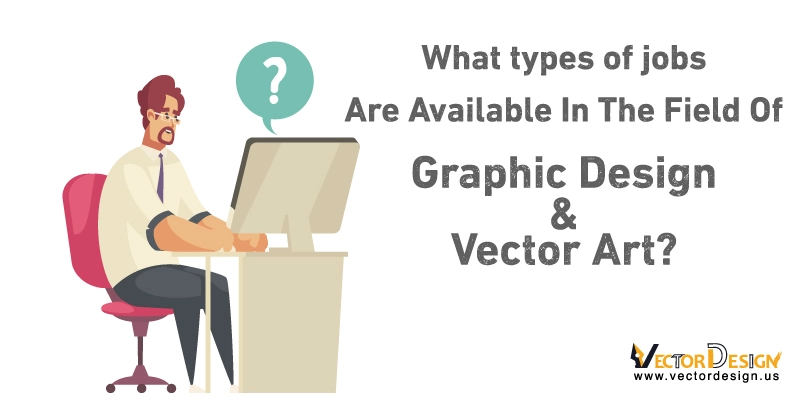
There are a wide variety of jobs available in the field of graphic design and vector art, including positions in advertising, marketing, web design, and print production. Some graphic designers and vector artists work as freelancers, while others work in-house at design firms or in other industries.
What is the job market like for graphic designers and vector artists?

The job market for graphic designers and vector artists can vary depending on the region and industry. In general, there is strong demand for these professionals, especially those with strong portfolios and a diverse set of skills. Many graphic designers and vector artists work as freelancers, which allows for flexibility and the ability to take on a variety of projects.
What is the typical salary for a graphic designer or vector artist?

The average salary for a graphic designer in the United States is around $50,370 per year, according to the U.S. Bureau of Labor Statistics. However, actual salaries can vary greatly depending on factors such as your level of experience, education, and location. Vector artists may earn slightly less than graphic designers on average, but again, actual salaries can vary greatly.


